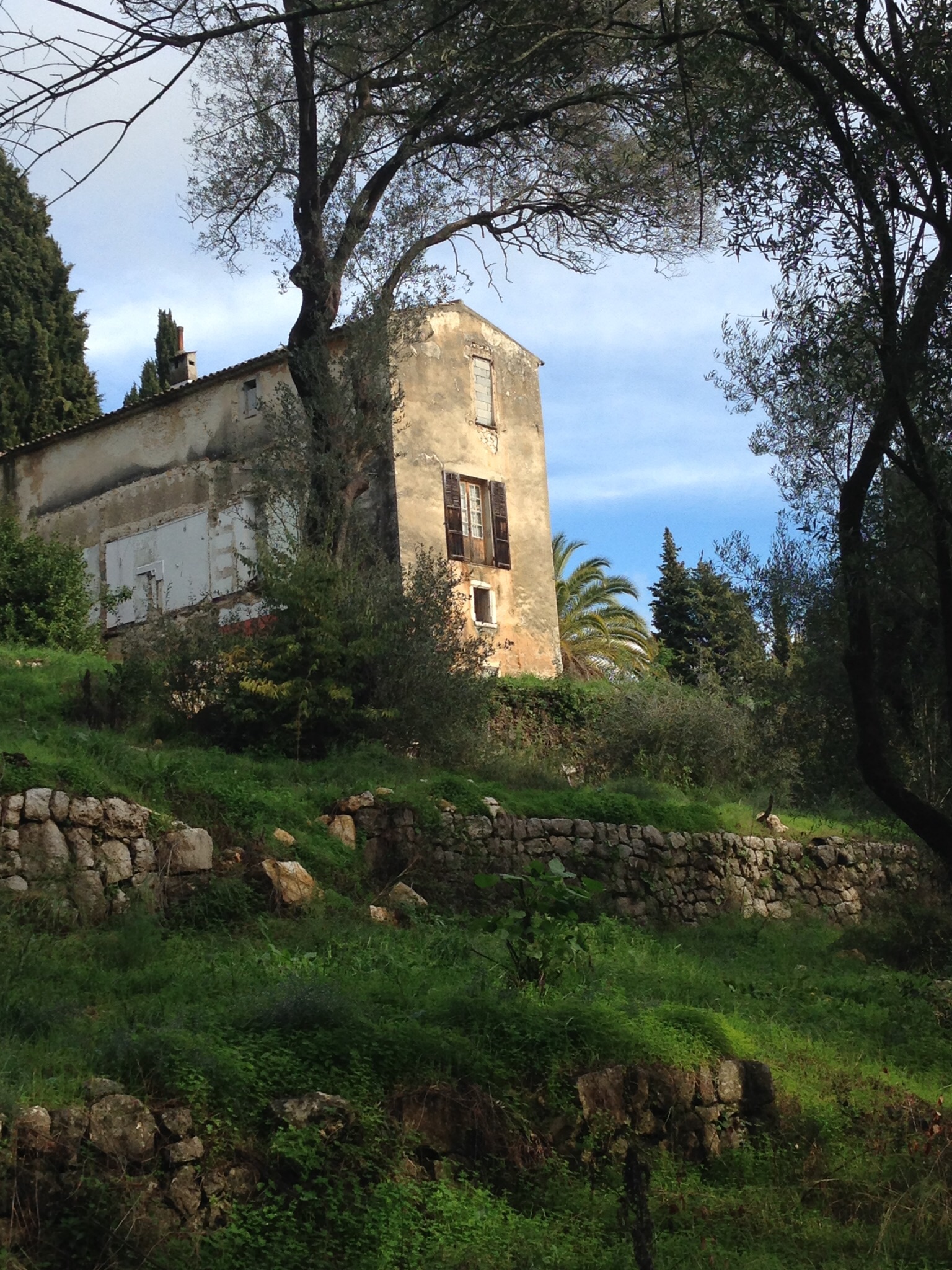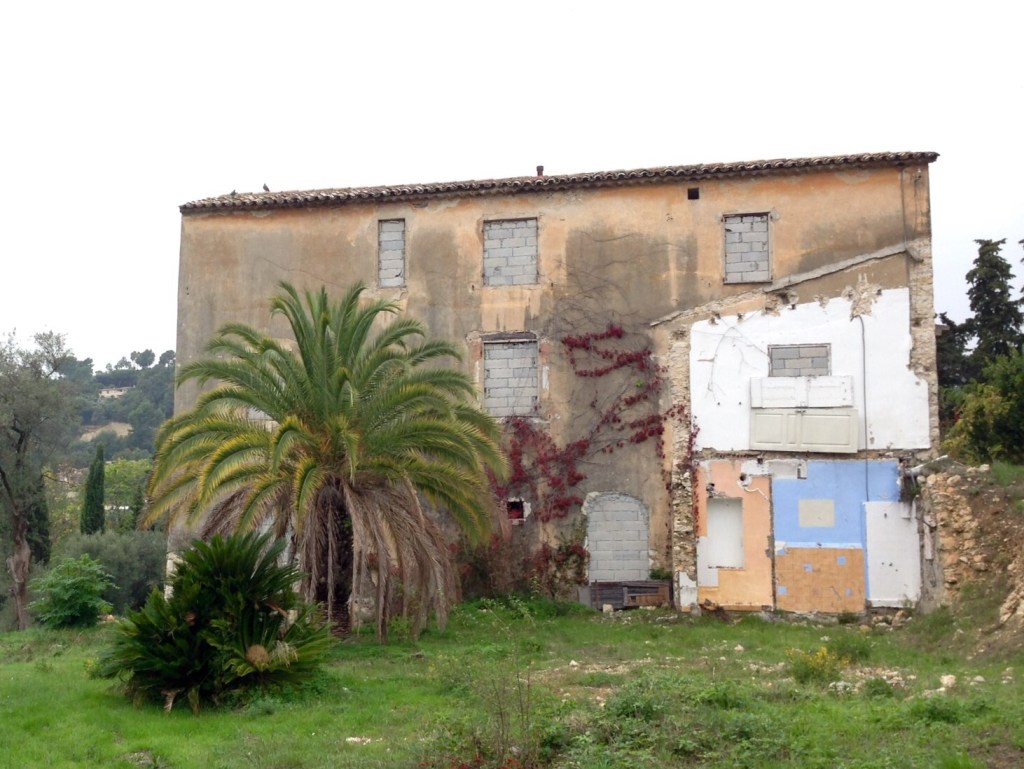If you found yourself in Saint Paul de Vence, a charming French village just a short drive from Nice, you might walk by James Baldwin’s former house without even knowing it. It isn’t much to look at now, and there is certainly nothing there to tell you what it once was. The house is bare, dilapidated even—the windows blocked by bricks and slabs of wood, shattered rock and snaking wires sticking out of its once vibrant structure. But it’s still standing, something that means a lot to some people in the village.
While the house is just a shell of its past life, you can bet that Hélène Roux sees something completely different when she looks at it.
Videos by VICE
When Baldwin first moved to her village in the early 70s, he was a far cry from that kid from Harlem, who fled the segregated United States for Paris with only $40 in his pocket. At that point, he’d already published multiple novels and the successful essay collection The Fire Next Time, which established him as an important voice of the civil rights movement and got him on the cover of TIME in 1963. Despite such intimidating achievements, he was an approachable guy. Roux just called him “Jimmy.”
Roux and her mother, Yvonne, would often visit his house, which was just down the street from the Colombe d’or, the Roux family’s hotel and one of Baldwin’s favorite haunts. His gate, never locked, was draped with bougainvillea and ivy. Roux remembers a grove filled with citrus trees and lots of roses, plenty of places for a young girl to get lost in. Baldwin would bring her mint syrup and grenadine while she played, and unlike the formal suit and tie he wore when debating at Cambridge or on The Dick Cavett Show, he’d be wearing espadrilles—the local shoes of Provençal—and underneath his straw hat, he often wore a big, white smile.

James Baldwin’s house in Saint Paul de Vence. Photo by Shannon Cain
That cottage in Saint Paul de Vence now has two possible fates. It could be remodeled and turned into a residence for writers of color by activist Shannon Cain, who, last year, spent ten days squatting in the house to raise awareness about the property’s history. This is what the author had always wanted, according to Roux, but the Baldwin family lost ownership of the house after he died of stomach cancer in 1987. Further complicating the matter, the Baldwin estate—who decliend to comment for this piece—does not support Cain’s efforts to save the house. If the activists can’t buy it back, the house could end very differently.
The property is owned by a French real estate company called Socri, which is planning to build 18 luxury apartments on the ten-acre plot, according to Cain. It would erase the last physical trace of the author’s time in Saint Paul de Vence, a place that he not only loved dearly, but took refuge in, according to Baldwin expert Magdalena Zaborowska, who has written numerous books on the author.
“Baldwin, who grew up in segregated New York City, who was targeted by the police, and who was victimized because of his sexuality as a queer person and because of his race, obviously had a really tough time finding places that were safe, that were nurturing,” said Zaborowska, an Afro American and African studies professor at the University of Michigan. “And lo and behold, even though he associated himself with big cities, until 1971, when he went to the south of France, he found himself and really loved his home in that tiny village.”
Despite the house’s poor condition, it has become a pilgrimage destination for Baldwin fans, longing to connect with the place he lived and wrote. Roux said that lost travelers often ring the bell of her home in Saint Paul de Vence, wondering where the Baldwin house is. And while it’s one thing to read a writer’s work, “It’s something to see where the writer actually lived, where he made sense of the world from,” said Thomas Chatterton Williams, an American writer living in Paris, who chronicled his journey to the Baldwin home for the New Yorker.
“I was moved,” Williams told me of his trip to see the house last year. “What’s somewhat sad is, you know, often times black people don’t have the ability to pass on wealth. Here was a guy who achieved so much, who truly excelled. But he died a kind of a really common kind of death, which was, without a piece of land,” he said. “Something about that was sadly very African American.”
Losing this house would be a loss, to the history of literature and to Saint Paul de Vence. And while Charles H.F. Davis III, who is on the board of advisors at His Place in Provence, a group trying to raise money to save the house, hopes to see the house saved, “the legacy of Baldwin isn’t determined by this thing being there or not being there.” And that’s true. Whatever happens to the house, whether it gets surrounded by wealthy condominiums or turned into a writers’ colony, Baldwin’s work is having a resurgence that is bigger than any bulldozer. Raoul Peck’s new film about Baldwin, I Am Not Your Negro, has been nominated for an Oscar, and writers like Ta-Nehisi Coates are introducing the author to a new generation of Americans, hungry for advice on how to deal with America’s race issues.
“Some of the things that make him so ill fit for the kind of black power era came back to make him kind of perfectly tailored to our own,” said Williams. “The fact that he was gay, the fact that he was comfortable in a variety of cultures, that kind of made him intersectional before that was a thing.”
That’s the good news, that Baldwin’s legacy is bigger than the loss of any one building.
But there’s bad news, too. Whether the house is saved or not, it wouldn’t revive what has already been lost. The fact that Americans have to go all the way to France and break into an abandoned house just to experience such closeness with a black author is a sad footnote to this story either way. Because while you can visit the houses of William Faulkner and Herman Melville, according to Zaborowska, it’s almost impossible to do the same with black authors. The real bad news is, out of more than 70 homes of American authors open to the public, Zaborowska and I could find only five of African Americans: the homes of Frederick Douglass, Alex Haley, Martin Luther King Jr., Booker T. Washington, and Langston Hughes.
“Baldwin’s legacy in terms of a material setting, in terms of material culture attached to his life, has not been preserved,” said Zaborowska. “And this has been true for many other black writers. So I think we have a huge task in front of us to really think through what the matter of black lives is and how to preserve it.”
Follow Matt St. John on Twitter.




